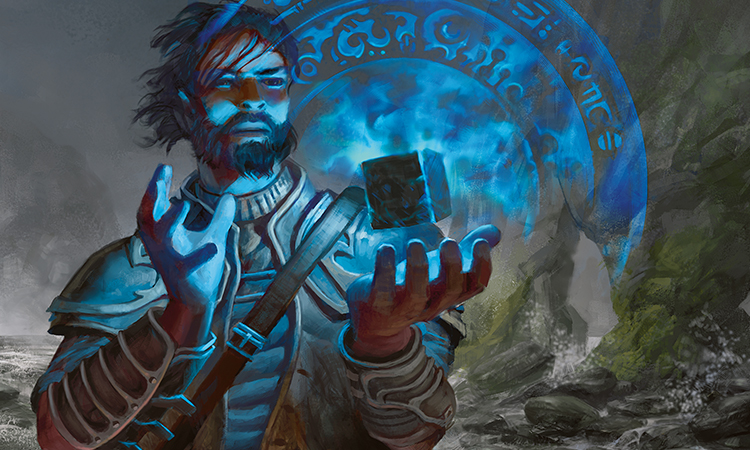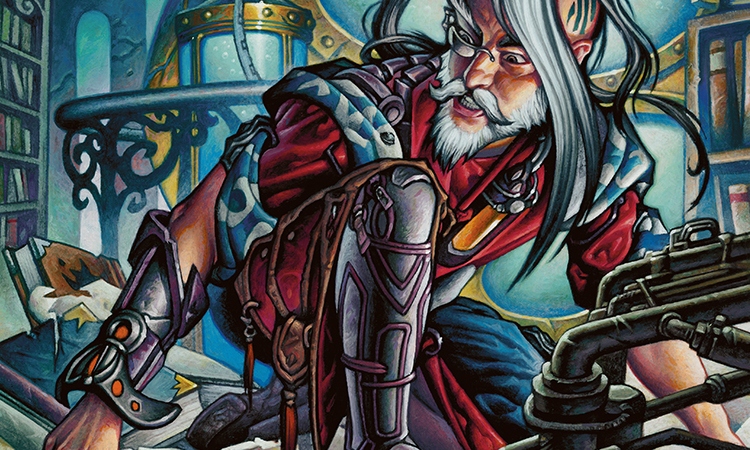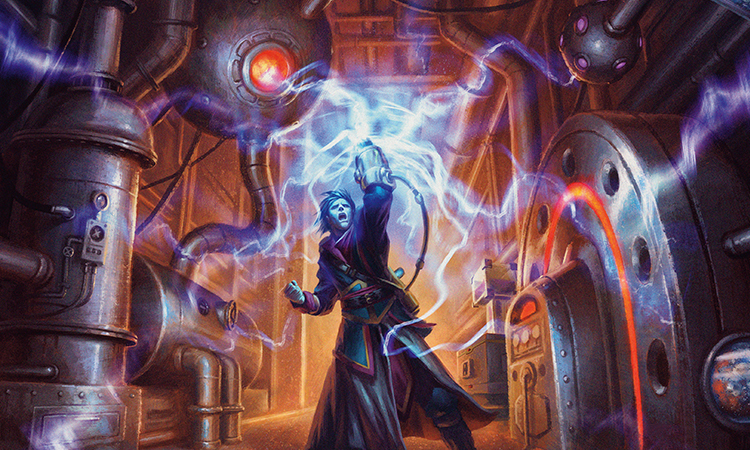Making Your Own Magic Format
There are many aspects that make the game of Magic enjoyable. An often-overlooked aspect of Magic is that it is not only a game, it is a platform upon which different games can be played.
The ability of Magic to support a multitude of gaming experiences means it can always offer something to players. Burned out on tournaments? You can play Commander. Want to compete but don't want to cast Siege Rhinos? Try playing Vintage or Modern. Exception-based design means you can create new experiences for players without rebuilding the game from the ground up.
In other words, you can create a new "version" of Magic just by including different cards. When a game can only change itself by changing fundamental rules, the identity of the game fragments. Magic maintains a strong identity because you can tweak settings such as life totals, cards drawn, and deck design to broaden the space. Players can play Standard and Commander without having to learn a lot of new rules.
If you want to have a new experience in Magic, you need not create in-depth variant rules. Careful selection of cards and altering the parameters of the game let you build formats that are accessible and fun. We'll talk about what goes into format creation and look at some examples.

The Power of Format
A format in Magic: The Gathering defines the special rules under which a game of Magic can be played. It also defines variations to deck design rules, detailing changes to the number of specific cards that can be present, the size of the deck, and types of cards that players can use. Before we delve into tricks you can use for making your own formats, we can take a moment to define characteristics that all formats can have.
- Formats can be broad or closed. A broad format includes more cards from the total available pool of Magic, and a closed format leaves out more cards than it includes.
Broad formats create more synergy between cards but also create more potential for individual cards to cause imbalance. Closed formats have less synergy but are easier to balance. Closed formats can also create deeper themes with their narrower selection ("only Knights or Dragons can be used," for an example).
- Formats can be solitary, dueling, or multiplayer. Solo Magic is untapped and a great place to explore for a format, as demonstrated by solitaire (with ability to scale to multiplayer) formats like Theros block's Face the Hydra.
Dueling formats are built for two players to compete against each other. Dueling formats play close to the default experience of Magic and need the fewest changes. Multiplayer formats are for three or more players and require forethought for mechanics and interactions with multiple opponents. How players can attack and defend and how certain cards become more powerful with multiple opponents are extra factors you need to account for in multiplayer Magic.
- Formats can be competitive or casual. Competitive formats emphasize optimized deck design, tight play, and coherent, consistent rules. Competitive formats limit the pool of viable decks while paying attention to how narrow that list is. Formats with only one or two "good" decks get stale pretty quickly. Competitive formats allow you to create consistent and powerful rules by keeping decks small and allowing multiple copies of cards to be included.
Casual formats emphasize creativity and expression. Casual formats allow as many "competitive" and viable decks as possible, so rules and deck design encourage variance with high deck sizes and fewer copies of cards.
- Formats can contain pushed elements. Some formats use elements from the game and give them special emphasis. This emphasis comes as rules to define new interactions or zones of play.
Commander emphasizes the legendary creature type, defining a new zone (the "Command Zone") and altering deck design based on the creature you choose. A good rule of thumb when using pushed elements is to go narrow but deep. Pick one element you want to emphasize and then explore that one element and rule changes around it extensively. Too many pushed elements will alter the game enough that adoption and understanding of your format will suffer.
- Formats can contain added elements. Added elements are gameplay elements that don't exist in Magic's current rules.
The commander we mentioned earlier might seem like an added element, but it extends something that exists in Magic—a creature. The commander is a creature given more "screen time" and extra rules interactions. Archenemy's Scheme cards or Planechase's Plane cards and planar die are great examples of added elements. These elements only exist in their format. This is the blessing and curse of added elements; you add novelty to your format but also add gameplay objects or rules with little ability to enter other formats. Added elements tend not to be portable, but they allow you to create unique formats and experiences.

How do these concepts apply to Magic formats we already know? We won't try to describe every Magic format, but just enough to understand formats better before we make our own.
Standard, Modern, Legacy, and Vintage are competitive dueling formats with no added or pushed elements. The variation between each of these formats is where each fits in the broad/closed continuum. Vintage is the broadest format, with access to all tournament-legal Magic cards ever made. Vintage is full of powerful synergies that can end the game in the first few turns. Legacy has shadows of that power, but Modern excludes enough cards that there is less power while still having many more synergies than Standard, which is the most closed format. Standard stays fresh by building up and tearing down its closed format. Each set will get to interact with two other sets before leaving the rotation, so it is difficult for the format to remain stale or imbalanced for long.
Commander is a broad, casual, and multiplayer format with one pushed element: the commander. The commander defines which colors can be used in the singleton, 99-card deck. Commander is built to encourage social, expressive, and variant play and only restricts cards proven to work against those goals.
Canadian Highlander is an interesting format on the casual end of the competitive scale. While it uses high-variance singleton decks, it allows the use of the most powerful cards in the game by including a points system rather than banning or restricting cards. You can describe Canadian Highlander as a broad, "casual competitive" format with no pushed or added elements.
Lastly, Cube: Legacy is a casual, closed, multiplayer format (like most cubes) with one added element: persistence. In Cube: Legacy, each game and draft lets you change cards, rules, and more by unlocking achievements within the draft itself.
Doing It Yourself
So we understand a lot more about what defines a format, and we have a view into the makeup of other great formats. How do we create our own format? Where do we start and what steps should we take?
Start with a feeling. What experience do you want to have? Those suffering from format burnout might take an inventory of what's missing in the current experience and create from that. Do you want a tense, gritty game where any misstep could mean you losing? Would you rather play a lighthearted game where any random thing could happen? It sounds weird, but that emotional inventory is the best tool available to a designer, acting as a compass to point you in the proper direction.
Curation. Now you know what feelings you want your format to provide. Start thinking about cards you do and don't want in the format. Would you like to play with the Power Nine? Do you want to play with creatures only? You can think in individual cards or in broad strokes.
Define your format. Now that you know the experience you want and the cards you'll include and exclude, you can think about what format best fits your needs. There is no shame in forking off another format here. "Just like ___ but..." is a great design pattern to begin with. If you want to push or add elements, start simply and add more only after playtests.
Make decklists. Unless you are making a Limited format, make sample decklists according to the deck design rules you use. Better yet, grab friends and have them make decklists too. You want people to try and "break" any glaring problem with your format, but try not to pay too much attention to claims that "X is broken" in the format. Only correct the most obvious and clear errors.
Playtest. Now it's time to play! You can use the decklists you built earlier or new decklists to play games and see what works and what doesn't work. Some cards that seemed "broken" or overpowered might prove harmless, while cards you don't suspect could show surprising power. The thing you must remember is that different formats change the power and interactions of cards. Prophet of Kruphix never saw much Standard play, but had to be banned from Commander. Playtesting is how you find unexpected interactions, so when in doubt, play more games.
Rinse, repeat. You'll keep repeating the process of playtesting and tweaking your rules over and over. The best part about making games and formats is that you're never finished. Each format we've discussed still needs regular care and attention. Yours will too.

Taking Your Own Advice
I couldn't write an article about creating your own format without creating my own. I worked on several, but the one I'll share with you is Sorcerer, a casual and broad dueling format with one pushed element: sorceries. If you said that the game was "just like Commander but with sorcery cards," you wouldn't be too far off.
I created the format because I wanted a more spell-oriented experience in Magic. I wanted to take it down a notch from planeswalkers who summon creatures to do their battle to plane-bound sorcerers who have more "conventional" wizardly duels.
With that in mind, I needed to push sorceries. What is more spell-y than a sorcery?
Commander is a great model because the command zone gives a card persistence and value in design and in play. Borrowing from it to use in Sorcerer, each player has a sigil, that player's signature spell. Sigils map to commanders in most ways. You can cast your sigil repeatedly, but its converted mana cost is increased by two each time you cast it. A sigil establishes the color identity of your deck, just like a commander does.
Further defining the format, I wanted a wizard duel but with more variance, so I decided on 60-card decks with singleton card selection. We used a banned list influenced by Duel Commander (a competition-oriented Commander variant), and then I got some of my friends to make decklists. The last change I felt I needed to make was to preserve that original desire for spells: you can only have five creatures in your entire deck! It's at this constraint that the flavor comes out, and my friends and I are free to make great decklists.
Playtesting is showing the game to be fun, but I am always looking for more and more decklists and play reports so it can evolve. The rules for Sorcerer can be found here. I hope it provides inspiration for you as you build your own Magic formats.

